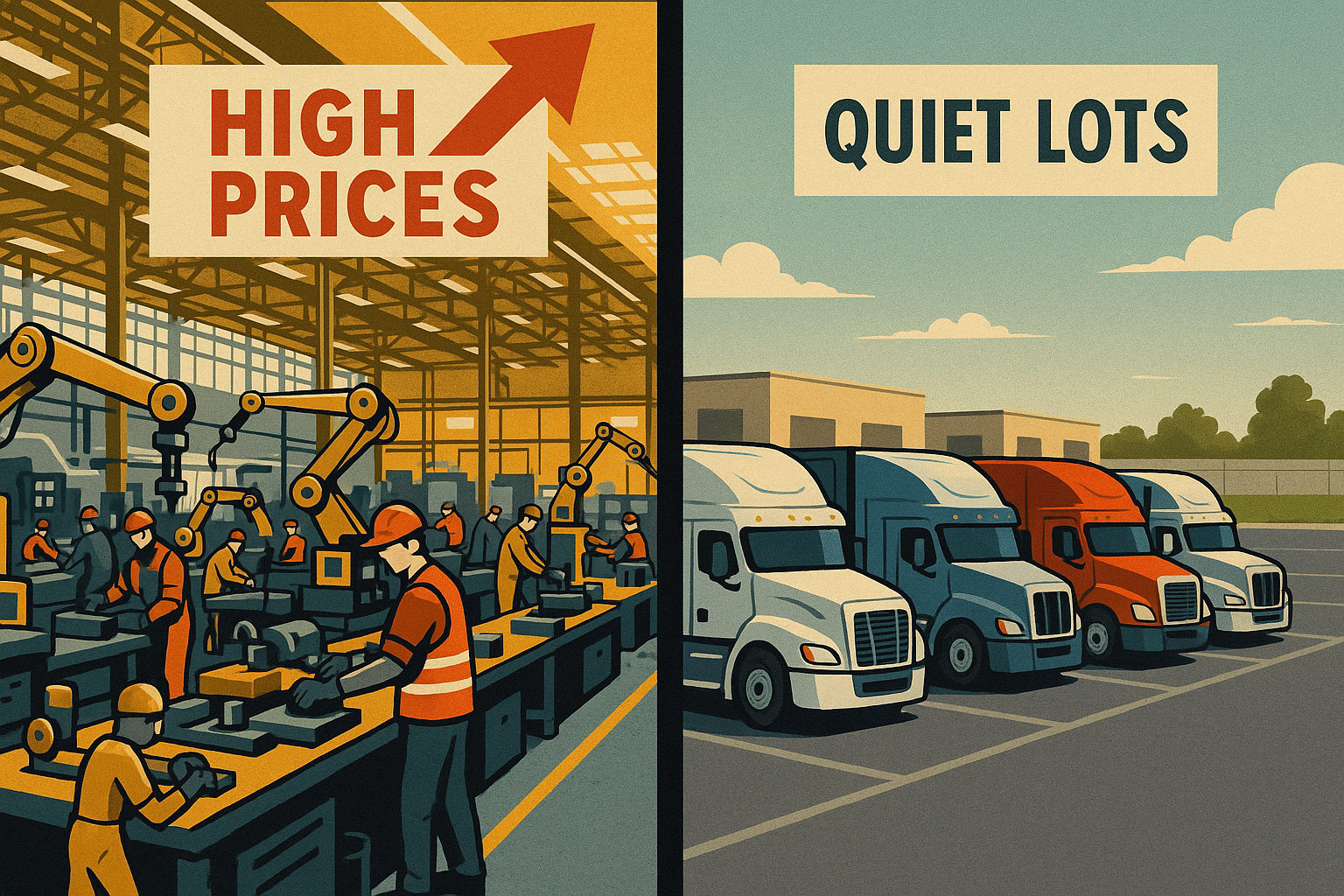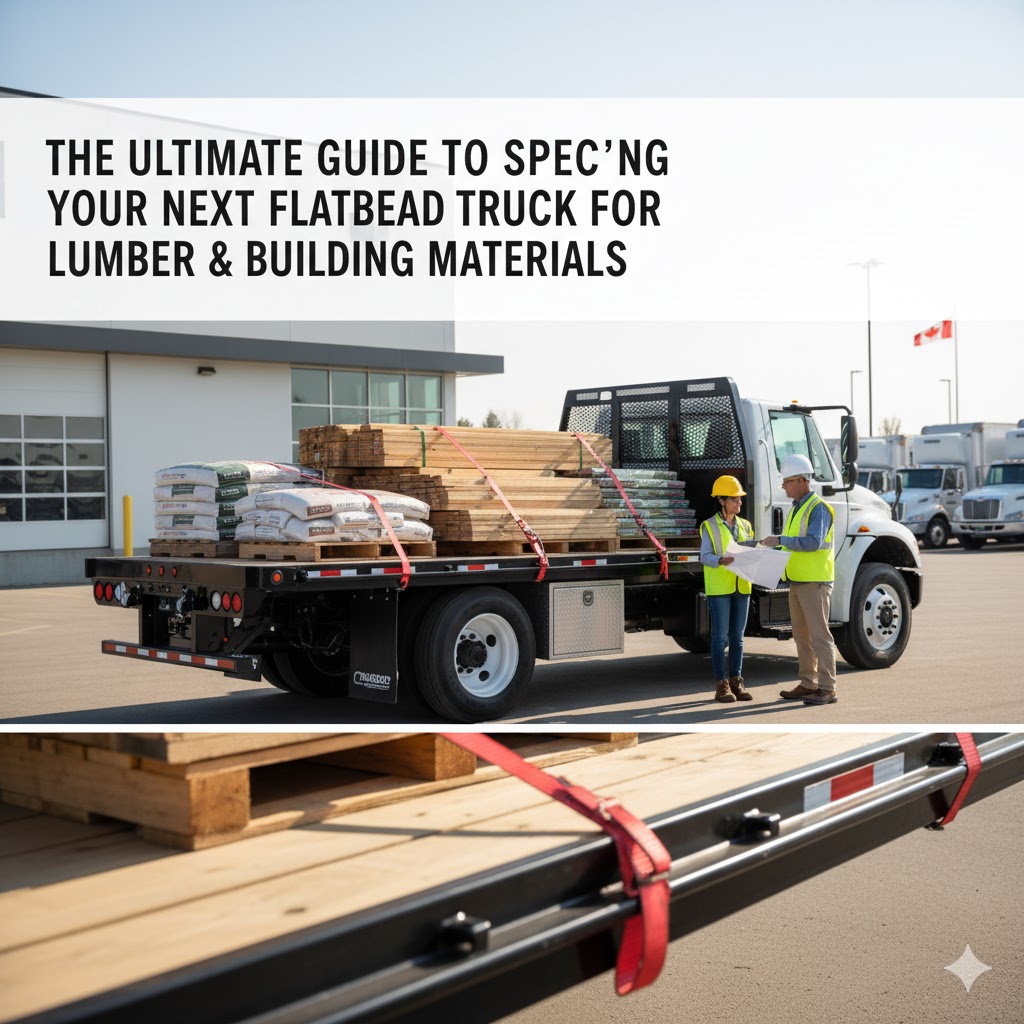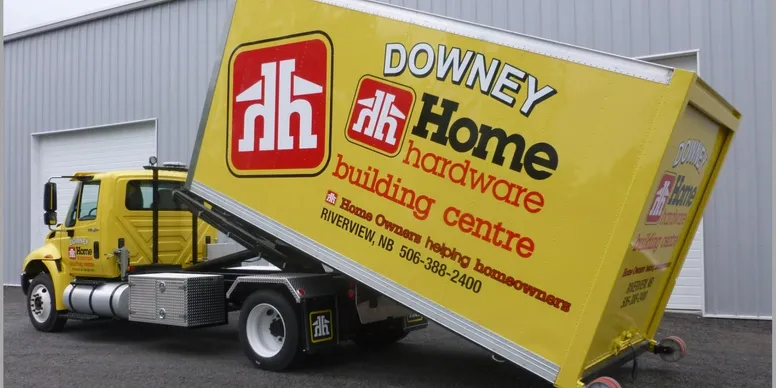Navigating Axle Configurations: How To Maximize Payload and Stay Legal

If you run deliveries for a Home Hardware, Castle, or Timber Mart yard, you already know that every pound matters — not just in payload, but in fines, fuel, and wear on your trucks. Getting axle configurations right isn’t just a spec sheet detail; it’s the difference between running efficiently and bleeding money every week.
Too often, I see yards spec or buy trucks based purely on what’s available, not what’s appropriate for the loads and routes they actually run. The result? Overweight tickets, premature suspension wear, or underutilized capacity. Let’s fix that.
Here’s a straight-forward breakdown of axle setups, what they mean for payload and permitting, and how to match them to your operation.
Single Axle: Light & Nimble — But Limited
Payload: Lowest capacity
Maneuverability: Excellent — tightest turning radius in the group
Best For: Small or specialty deliveries
Single-axle trucks are perfect for light-duty runs — trim packages, bagged materials, or quick drop-offs where space is tight. You’ll love the handling, especially in older residential areas or downtown cores.
But once you start hauling heavier lumber or drywall, you’re pushing limits. The suspension, tires, and brakes won’t thank you. If you’re mostly running smaller city loads, it’s a solid fit — otherwise, step up.
Tandem Axle: The Workhorse
Payload: Substantially higher — weight spread over four wheels on two axles
Maneuverability: Still good
Best For: The majority of flatbeds, dumps, and boom trucks
Tandem axles hit the sweet spot for Canadian building suppliers. Enough capacity for a loaded boom truck full of shingles, but still nimble enough for jobsite delivery.
Typical gross weights fall in the 37,000–39,000 kg range depending on provincial spacing. It’s the go-to spec for most Home Hardware or Castle yards: heavy enough for lumber, practical for mixed runs, and compliant across Ontario and Quebec.
If you’re spec’ing a new truck, this is usually your starting point.
Tridem Axle: For Heavy Hitters
Payload: Highest legal capacity — six wheels on three axles
Maneuverability: Reduced turning radius
Best For: Oversized or bulk deliveries, regional hauls
Tridem setups are for serious hauling — full loads of concrete block, steel beams, or aggregates. Legal gross weights range 52,000–60,000 kg, depending on axle spacing.
They do, however, bring tighter turns and added permitting. If you’re mainly doing residential or city work, it’s probably overkill. But for large-scale or industrial customers, tridem trucks can be a huge asset.
Lift Axle (Pusher/Tag): Flexibility
What They Do: Add an auxiliary axle that can be raised or lowered depending on your load.
Why They Work:
1) More Payload when lowered — spreads axle weight legally.
2) Less Wear when raised — fewer tires, less brake use.
3) Better Fuel Economy — less rolling resistance on light runs.
4) Tighter Turning — improves maneuverability when lifted.
If your loads vary — siding one day, LVLs the next — a lift axle gives you the flexibility to stay efficient and compliant year-round.
Axle Weight Quick Reference: Ontario & Quebec
| Configuration | Approx. Legal Gross Weight (kg) | Notes |
|---|---|---|
| Single Axle | 27,000 – 29,000 | Ideal for light work and city runs. |
| Tandem Axle | 37,000 – 39,000 | Standard spec for most building supply trucks. |
| Tridem Axle | 52,000 – 60,000 | High-capacity option for heavy hauls. |
| Lift Axle (added) | +7,000 – 9,000 (when down) | Follows spacing and distribution rules per province. |
Tip: Ontario uses Regulation 413/05 under the Highway Traffic Act for axle weights. Quebec has its own system, but both calculate limits based on axle spacing, not total GVWR. Always check your route’s posted limits before loading.
Permitting & Compliance: The Fine Print You Can’t Ignore
Your truck might handle a load fine, but that doesn’t mean it’s legal. Axle weight limits vary not only by province but by road type — and enforcement is strict.
Even being 1,000 kg over on one axle can trigger fines or points on your CVOR. Before loading, verify:
-
Axle spacing measurements
-
Provincial limits (Ontario/Quebec charts differ)
-
Seasonal restrictions (spring thaw limits)
If you cross provincial lines, double-check both sides. A truck legal in Ontario may be overweight once it hits Quebec’s network.
That’s where working with an experienced broker or upfitter pays off — we build trucks that are legal everywhere you actually deliver.
The Bottom Line
The “right” axle setup depends on what you haul and where you’re hauling it:
-
Single axle: Great for light, local work.
-
Tandem: The everyday hero for flatbeds and boom trucks.
-
Tridem: For big payloads and regional hauls.
-
Lift axle: Smart money — adds flexibility and fuel savings.
Getting this right means fewer fines, longer truck life, and better ROI on every delivery.
If you’re unsure your current spec fits your routes, let’s have a quick chat. Ten minutes reviewing your typical loads and route permits can save you thousands in downtime and compliance costs.



